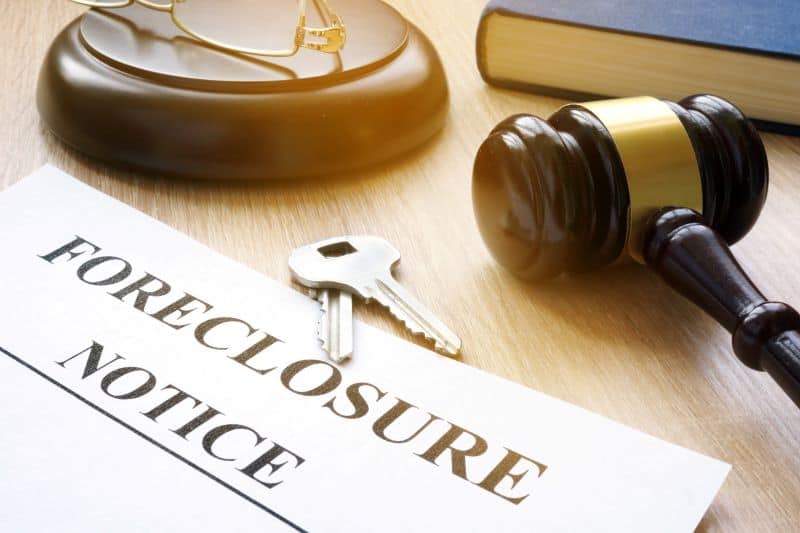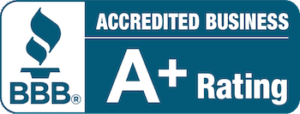Are you a New York homeowner faced with the risk of losing your home to foreclosure?
If so, it’s natural to feel overwhelmed and more than a little anxious. After all, the real estate world is wrought with complicated jargon and complex forms that can make your head spin while your heart grapples with what’s happening.
That’s where it helps to have a clear understanding of what’s about to happen.
Today, we’re sharing a step-by-step guide to the New York foreclosure process. Knowledge is power and we’re putting it back into your hands.
Ready to learn more? Let’s get started.
Step 1: You Miss Multiple Payments
If your payment was due on the 15th and you sent in the check on the 17th, don’t sweat it. In most cases, lenders or loan servicers in New York allow a 15-day grace period.
This means if they receive your payment within 15 days of its due date, you won’t incur any extra charges, penalties or legal consequences. If you wait too long and miss this window, you could incur a late fee of up to 2%.
If you continue to miss payments, your lender will reach out to you to remind you of your financial and legal obligation to pay back your mortgage loan. While you may feel tempted to ignore these phone calls or toss the letters, this is counterproductive to your efforts.
After 120 days from the first missed payment, your lender can take legal action. Given that New York is a judicial state, you’ll have this many days to pay back your overdue charges in full. Or, you may choose to look into loss mitigation options at this time.
Step 2: Notice of Breach
Before issuing the foreclosure, most New York lenders will reach out to borrowers to let them know that they’re about to take legal action. This document is a “Notice of Breach” letter. When you receive it, you’ll have 30 days to pay back the balance of the missing payments.
In addition, your lender will also provide you with a 90-Day Foreclosure Notice. Keep this document for your records, as it contains valuable information including:
- How long the mortgage has been in default
- The amount of money still outstanding
- The lender’s (or mortgage servicer’s) contact information
- A list of at least five state-approved non-profit housing counseling agencies
The latter will have resources that can help you find free or low-income housing opportunities in your area.
Step 3: Foreclosure Loss Mitigation
About 30 days before your case goes to court, you’ll enter into a loss mitigation period. During this month, it’s wise to explore all local resources that can help you mitigate a financial setback.
The quickest way to do so? Reach an agreement with your loan servicer.
In some cases, you may be able to enter into a payment plan that can help you approach the overdue payments in a more manageable way. Or, you can refinance your mortgage with another lender offering a better rate.
Another route you may not have considered? Sell your property in a short sale! When you do so, you’ll sell it for fair market value (which is usually less than the loan you’re paying off) and use those funds to pay back your lender if this setup is agreeable.
Step 4: Filing of Lis Pendens
Have you missed more than three payments in a row? Once your lender sends you all the required legal notices and warning notes, they’ll take your case to court.
Before they can do so, they’ll need to issue a formal declaration with the county clerk. This is a “Lis Pendens” note and it’s the official first step in a New York foreclosure.
Within this note, the lender will include the following details:
- The property address
- The names of the borrowers
- Loan details (total amount, interest rate, length of term)
- The number of years in which the loan must be repaid
- All late charge amounts
Once submitted, the Lis Pendens makes the foreclosure public knowledge. That means anyone looking up information on your property can see that it’s there’s an outstanding lawsuit on it that could contest its ownership.
After sending the Lis Pendens, your lender will then send you a Summons and Complaint notice. This is where you’ll find the date and time you need to appear in court.
If you receive your summons in person, you have 20 days to respond. If it’s sent in the mail, you have 30 days.
The lender must show verification that you received the summons, so respond as soon as you can. Opting not to may put off the consequence in the short-term, but it pushes your ruling in favor of the lender.
Step 5: The Settlement Conference
No more than 60 days after you acknowledge that you received the Summons and Complaint notice, you’ll need to attend a court-mandated settlement conference.
If you have one, bring your foreclosure attorney along to this conference. At this time, you’ll try to come to an agreement with your lender. Take with you both proof of income and your most recent tax returns.
You’ll discuss the loan details with your lender, including the following:
- The initial loan amount
- The amount still outstanding
- The most recent balance including all late charges
- Your current financial status
- Your reasons for defaulting on the loan
- All documentation and other paperwork supporting your claims
- Your qualification for government programs or loan modification resources
If the conference is a success and you’re able to reach an agreement with your lender, the foreclosure will cease via official discontinuation of the Lis Pendens. Your lender has up to 150 days after the conference to discontinue it.
Step 6: The Judgment
Maybe you decided not to respond to your Summons and Complaint Notice, pushing your case to court. Or, you couldn’t find a middle ground with your lender at the settlement conference.
Now, your case is before the judge and your lender is filing for summary judgment.
In this process, they’ll ask the court to rule in their favor and expedite the foreclosure based on one of the following circumstances:
- A lack of defense on the borrower’s part
- A lack of proof that unlawful lending practices are at play that would cause a borrower to default on payments
If the court approves a summary judgment, you’ll lose the case. If the court doesn’t approve it, your case goes to trial.
If you lose the trial or get stuck with a summary judgment, you’ll need to prepare for the foreclosure. The court will approve a sale date for your property.
Re-Instatement
In New York, a delinquent borrower can make a defaulted loan current again by completing all overdue mortgage payments. This includes additional fees and charges, known as arrears.
This is possible even after the court rules in favor of the lender. Yet, it’s not possible after the date of the sale.
If you agree to pay arrears after the judgment, the foreclosure will halt for the time being, pending your compliance with future payments. If you default on a payment during this trial period, the court will release the hold and allow the foreclosure to proceed.
Step 7: The Foreclosure Process
In New York, your foreclosed property will go up for sale at a public auction. Most take place at the county courthouse.
The highest bidder will get the property and most bids begin at $1,000. After the sale, you will lose your right to redeem your property, even if you offer to pay arrears. The winning bidder will put down 10% of the bid price, with the remainder due within 30 days.
What happens if the bid starts lower than the upset price and the upset price isn’t reached? In this case, the lender can request that the property go back in its ownership, where they’ll list it on the market as “Real-Estate Owned.”
Deficiency Judgments
When a home forecloses for a lower amount than its outstanding mortgage debt, or its fair market sale price is lower, this is a deficiency judgment.
Under state law, the lender can contact you to collect on this difference. If the court approves their Request for Delinquency, they’ll approach you to pay.
Step 8: Eviction
After a foreclosure sale, you’ll have to vacate your property with 10 days after receiving a request to leave from the new owner.
You can do so via a cash-for-keys agreement or an official eviction. With the former, you’ll receive a financial incentive to move out. With the latter, the New York Housing Court will process your eviction.
Understand the New York Foreclosure Process
Now that you know a little more about how the New York foreclosure process works, are you a little less intimidated?
While this can be a trying time in your life, it isn’t without its opportunities. Reach out to your community resources and seek the guidance of real estate professionals to help you navigate your next steps.
Want a little more guidance as you learn more? Keep reading.
We’re real estate experts who specialize in fast sales. A short sale may be the ticket you need to reclaim your financial freedom, so let’s talk soon.





























